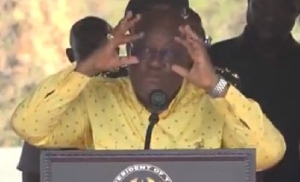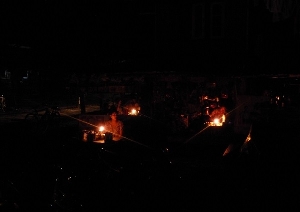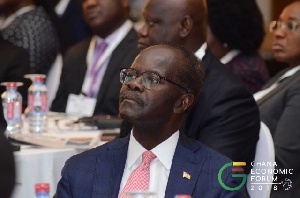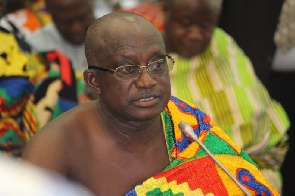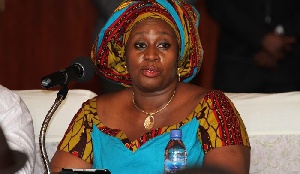• We spent a couple of days (25-26 August) in Accra meeting with government officials and development partners. Ghana’s macro picture for 2011 is very compelling. Its economy is projected to be the fastest growing in the world in 2011, but only in part due to the commencement of oil production. The non-oil sector, especially services and the cocoa sector, are also exhibiting strong performances. As such, Ghana’s real GDP growth is likely to be transported into the double-digit region, before dropping back into high single digits in 2012 as growth normalises. Ghana’s historically worrisome current account deficit is projected to shrink to the mid-single digits. The cedi is stable. Inflation is low and stable, allowing for accommodative monetary policy, which is favourable for credit growth. The fiscal deficit is projected to narrow in 2011, however, by 1 ppt less than the initial target. This spells the beginning of fiscal expansion.
• Infrastructure boom on the horizon implies expansionary fiscal policy. The commencement of oil production is evidently a boon for Ghana’s economy. However, for the oil and gas industry not to end up as an enclave that reflects in the macro numbers but is otherwise disconnected from the rest of the economy, the industry needs to be integrated with the local economy. To this end, the government has plans to build oil and gas infrastructure, including pipelines and processing plants, that will support the oil industry and make the gas sector attractive for investors. The government hopes that infrastructure investment will result in the construction of gas power stations and the production of by-products of gas, including fertiliser. To this end, Ghana’s parliament approved a $3bn (8% of GDP) Chinese loan, coincidentally while we were in Ghana, that will be channelled into key infrastructural projects including for the oil and gas industry. According to the Ministry of Finance, only $500mn of the $3bn loan from the Chinese will be “pure public debt”. By this they imply that some of the infrastructure will pay for itself, as some of the assets will be commercial facilities, backed by off-take agreements from the industrial and resources sectors. One-third of the loan is intended for oil and gas infrastructure. Around one-fifth ($650mn) will be spent on the rehabilitation of the Western Corridor railway and (Takoradi) port, in the mineral-rich and oil-producing part of the country, to improve the transportation of raw materials, including minerals and cocoa, from the point of extraction or production to the port and beyond to export markets. Part of the Chinese loan will also be used to finance agricultural infrastructure valued at $500mn, including an irrigation project, a fishing harbour and a waterways transportation project. The government plans to contribute to the financing of all of these schemes. Some of this financing is likely to stem from the petroleum funds, 49% of which is intended for infrastructure. The government’s infrastructure drive signals a shift in policy from fiscal consolidation to expansion. An increase in government spending implies an increasing risk to the inflation outlook over the short to medium term. It also implies that the growth of public debt will quicken, which means higher interest payments. But as the government plans to finance most of the infrastructure with external debt, the upward pressure on domestic interest rates is likely to be limited, in our view.
• Public debt is sustainable now, but growing at a faster rate. Ghana’s upwardly adjusted GDP numbers, following a data revision, cosmetically improved Ghana’s public debt/GDP ratio (see Figure 1). It dropped to 39% of GDP at YE10 post-GDP revision, from 65% pre-GDP, thus bringing Ghana’s public debt/GDP back into the sustainable region (less than 60%). Moreover, the oil-induced growth spurt in 2011 has helped to soften the growth of the public debt ratio this year. However, the indications are that foreign public debt is set to increase at a faster rate, mainly due to the increasing take-up of external debt to finance infrastructure projects. We are projecting an increase in public debt to 45% of GDP (48-49% of non-oil GDP) over the medium term, from 39.1% at YE10. Moreover, foreign interest payments are set to increase as the government contracts additional commercial loans. Optimising the infrastructure investments is thus critical given the higher cost of non-concessional debt. The upside is Ghana’s strong growth outlook – which should, for as long as it lasts, keep public debt sustainable.
• Utility price hike and a 10-15% fuel price under-recovery will push inflation to 13-14% by YE11, in our view. Inflation appears to have bottomed out. This likely explains the halting of the Bank of Ghana’s (BOG) monetary policy committee’s cutting cycle on 1 September, following two cuts in the YtD. The accommodative stance was due to a softening inflation environment, where inflation slid to 8.4% YoY in July, from 8.6% YoY in June and 9.5% YoY a year earlier (see Figure 2). However, the risks to inflation are rising, partly owing to increasing utility costs. Electricity and water tariffs were increased by 7% and 6.7%, respectively, with effect from 1 September. This adjustment of utility tariffs is partly related to the drive to bring tariffs to cost-recovery levels (thus preventing the build-up of arrears) and partly due to lower-than-expected volumes on the West African Power Pool (WAPP). According to our estimates, this utility price increase will push up inflation by 50 bpts. We had already projected double-digit inflation at YE11. However, instead of inflation ending the year in the 12-13% region, we are now expecting 13-14% inflation at YE11.
If you have any questions or comments regarding this report, please contact Yvonne Mhango .



